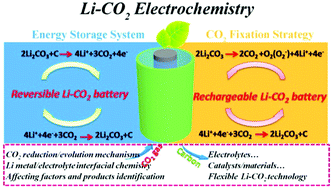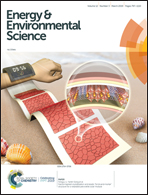Recent advances in understanding Li–CO2 electrochemistry
Abstract
With ever-increasing demand for balancing CO2 emissions and maximizing electrical energy supplies, Li–CO2 electrochemistry, coupled with dual characteristics of advanced energy storage and effective CO2 fixation, has been attracting considerable attention from researchers. Herein, we offer a real-time, in-depth, and overall review of the latest research progress concerning CO2 reduction/evolution reaction mechanisms in Li–CO2/O2 and Li–CO2 electrochemical systems. Meanwhile, affecting factors on the reaction pathways and the identification of discharge products are summarized and discussed. Then, Li anode/electrolyte interface construction, electrolyte properties and selection of cathode materials/catalysts and design strategy, especially their effect on the performance of Li–CO2/O2 and Li–CO2 batteries, are explored and possible solutions and suggestions are provided. Building on an in-depth understanding of Li–CO2 electrochemistry, novel flexible Li–CO2 batteries and key factors are summarized. Furthermore, based on advanced research progress in the past several years, we identify the main problems, controversies, and challenges currently existing in various battery components that remain to be addressed to design more practicable Li–CO2/O2 and Li–CO2 batteries. Finally, future research directions and opportunities are presented.



 Please wait while we load your content...
Please wait while we load your content...